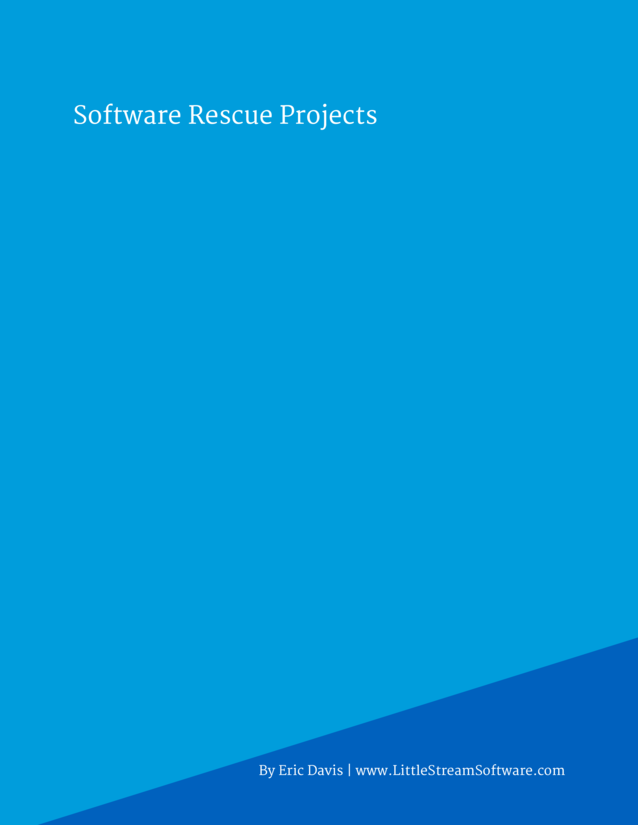
Download this guide
You'll also receive my Daily Shopify Tips email. You can unsubscribe or withdraw your consent at any time.
So you've heard that there are Software Rescue projects. Perhaps you're wondering if you have one, but you're not sure.
A Software Rescue project is a software project that is going bad. It's not a failure yet but somewhere, somehow it went off the rails and is heading down the wrong path.
The good news is that you can save the project, but only if you act in time.
In this guide you'll learn the causes of failing projects as well as ways to rescue them before they become total failures.
Excerpt
Introduction
So you've heard that there are Software Rescue projects. Perhaps you're wondering if you have one, but you're not sure.
A Software Rescue project is a software project that is going bad. It's not a failure yet but somewhere, somehow it went off the rails and now it's heading down the wrong path.
There are hundreds of reasons that lead to a Software Rescue project, but some of the most common are:
- unclear requirements
- inexperienced development team
- inexperienced management team
- changes too rapidly
- unsustainable development pace
- missing development practices and discipline
The cause could be one, all, or some other combination of factors. Generally it's not caused by only one factor, but a mix.
Still, there is hope.
The difference between a rescue project and a failed project is that the rescue project can still be saved - rescued.
How to rescue a project
Fixing a rescue project is possible, though it will be hard work. Depending on the factors that caused the problems, it might not even be practical to fix it. This is especially true if the cause is outside of your control and you can't change it (e.g. industry changes, powerful stakeholder).
You can take a systematic approach to try and diagnose the problem(s) and fix them though.
Stop digging
The first thing you need to do is to prevent things from getting worse.
When you're digging a hole and discover that you shouldn't be, the first thing you do is to stop digging. Not change the angle of your shovel. Not slow down. Not buy a new shovel with some fancy technology. Just stop digging.
Stopping things from getting worse will take different tactics based on what the cause is. For example if the list of new features are growing too fast, freezing features and stopping new feature development would stop it. If the problem is that new developers are joining the project, then stopping new hires would help.
You don't necessarily have to stop all development either. If you know the problem is with new features, you can stop them but still let the team work on bugs or other unaffected areas.
Keep in mind that when it comes to really desperate projects, stopping all development can be the prescription that's needed. Even if you "lose" time and resources, if you were heading in the wrong direction in the first place then stopping would still put you ahead.
Team problems
The biggest factor in a software project is the team. There are usually multiple teams involved, even informally.
There is a development team who has developers, designers, testers, and maybe even a writer. These people are involved in the actual production of the software.
Then there is the management team: the project manager, product manager, software architect, and business stakeholders.
People can cross between these teams. A developer might be involved in the management team by filling the role of the lead architect, or maybe the project manager is also doing testing.
Due to the dynamic nature of people, problems with the team and team members are frequently a cause of a rescue project.
As Gerald Weinberg said:
No matter how it looks at first, it's always a people problem.
Problems in the team will be the most difficult to solve, but they will also have the highest payoff.
The best place to start is to talk to the people and see what they think is wrong. Do it 1-on-1 and take your time so they have a chance to fully express themselves. You might not get the exact answers you need, but you can get an idea of the root cause for the team's problems.
Download this guide to continue reading
You'll also receive my Daily Shopify Tips email. You can unsubscribe or withdraw your consent at any time.